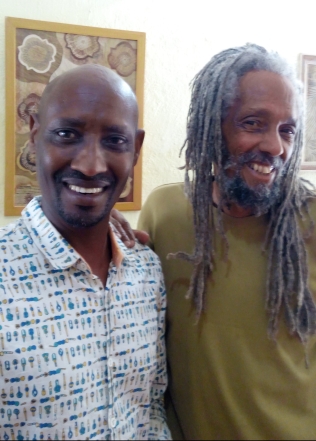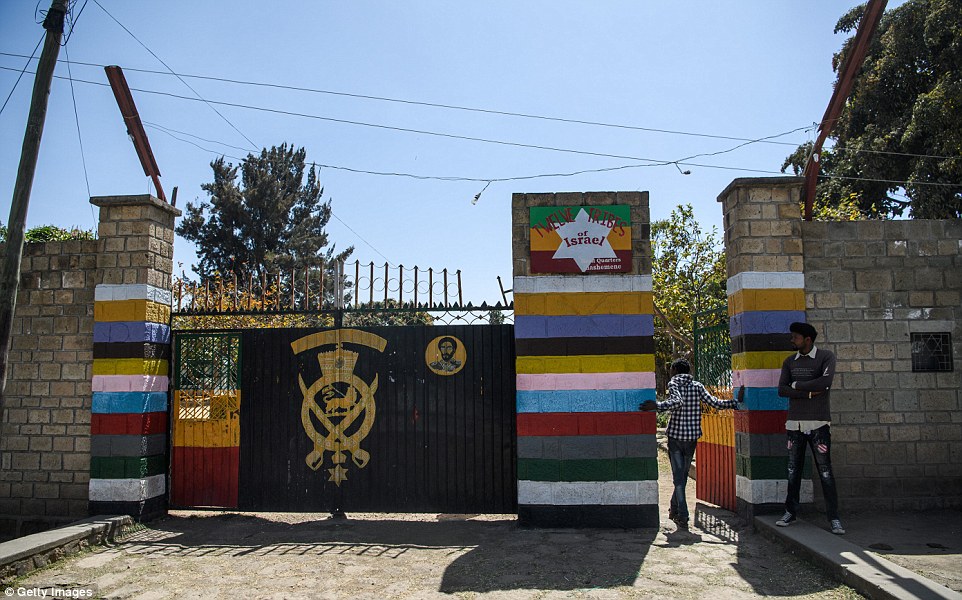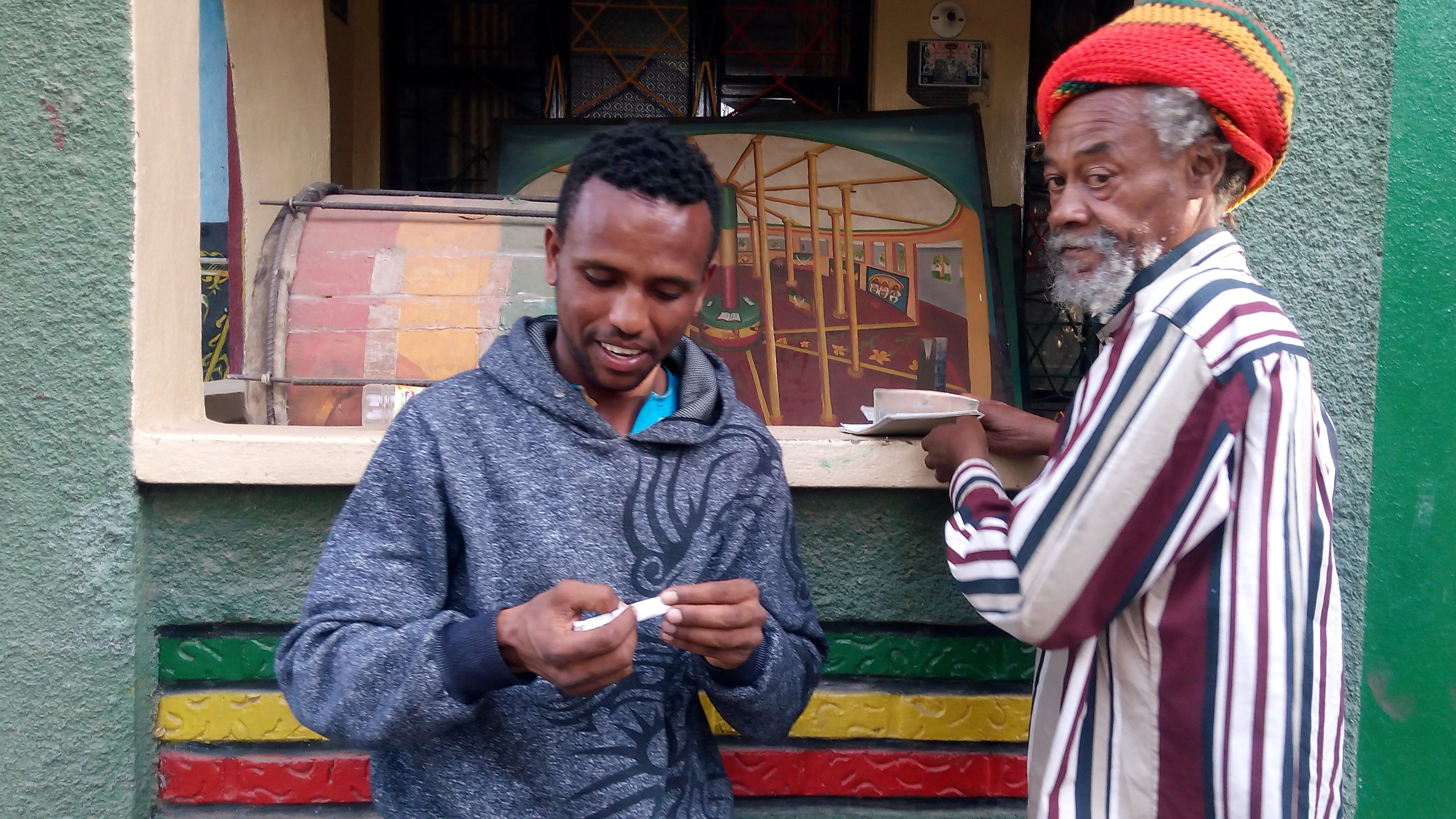I usually start my day with prayer – with the face on the mattress, then a reading from The Daily Bread.
Today is my birthday and I asked God to keep walking with me on this journey of self-discovery, to give me another chance to start over with Him – to keep forgiving my belligerence and selfishness.

“Happy Birthday Dad!” came in messages from my son and daughter. I quickly responded that I am actually some years younger according to the Ethiopian calendar.
The driver called in sick – food poisoning. He will see a doctor and come pick me up later.
I spent most of the morning on a boat ride at Lake Hawassa – pleasant views and I really felt guilty enjoying this without my children but again, how would one keep teenagers on the road for long without causing a crisis or war?
The driver arrived after midday and we decided against driving to Addis Ababa but instead tour the nearby town of Shashamane, the home of the Jamaican Rastafarians. We picked a 19-year old fellow who knows Shashamane well to accompany us – a friend to the driver. This will probably be the most eventful part of my travel.
Shashamane is 25KM from Hawassa – a town of 100,000 people. It is here that Rastafarians migrated to from the UK, France, Jamaica, Trinidad and Tobago etc. – they are descendants of African slaves who were taken away during the tragic trans-Atlantic Slave Trade.
During a visit to Jamaica in 1966, Emperor Haile Selassie set aside 500 acres in Shashamane to welcome back descendants of slaves seeking to return home. They did, and many Rastafarian made Shashamane their home and Ethiopia has become their spiritual home and they believe the Haile Selassie was a descendant of King Solomon and the Messiah.
The 400 Rastafarians who live here believe they are fulfilling a prophecy that descendants of slaves will all return to Africa. It is upon this historical background that I was excited to visit Shashamane.

We drove into the town – nothing different from the other Ethiopian towns that I have seen– the usual sea of blue Bajajs (Tuktuks), donkey and horse carts, street coffee places, shops and offices. It is really a crossroads town where major roads connect to different regions. We reached the home of the rastas in the northern side of Shashamane. We pulled onto a gate painted in rasta colours and written “12 Tribes of Israel.”
At first, there was a guard, then, a few young men joined from the street as we conversed about the entry. Within a minute we were surrounded by young guys all asking to be our guide, one had some kind of official tag. Another handed me some magazine about the Rastafarians. Another said he can get me something nice – “good ganja in Shashamane,” he said.
The guard opened the gate and we walked through, several of the young men came through too. I started to worry and told them I need no guide. “I am your guide. I have government papers,” the fellow with the tag said. He was definitely intoxicated with something “nice” and still chewing khat (miraa).
A rastaman approached us from the building – tall, slender and calm man with intense eyes
“Brother, just wait outside the gate, they are my guests now,” he told the “guide”.
“I am their guide,” the guide said.
“You are not our guide,” I intervened. “We don’t need a guide.
Words were exchanged and the young man wanted a fight. We retreated and left the compound and got into the vehicle and started to pull out.
“Sir, pay for the magazine, 200 birr,” I heard as a hand was extended towards me through the window. Ouch! I thought it was free stuff. I handed it back to him. He said I have read it so I should pay. Wow! This is getting interesting. I offered 50 birr. He took it.
We started to drive out while my mind was racing, wondering if this was the end of the Rastafari experience. I was disappointed. While at it, one of the young fellows came to the window.
“Brothers, don’t leave. I can take you to another place. A better place with no crazy people for free,” he said.
“For free? Are you sure?” the driver asked. “Yes, free.” I did not believe him but he has this cheeky smile and twinkling eye. He is definitely street smart and reminded me of my younger self while growing up in the border town of Namanga – hustling, always looking for one deal or another.
“I am sorry for the confusion, people here sometimes smoke too much stuff, too much marijuana,” he said.
He got into the car and guided us onto a dirt street to a compound that boasts as the only “Banana Art Museum” in the world.
He knocked the gate and called out. “Ras, Its Christmas family, they want to see you.”
It took a while until a tall, skinny rastaman opened the gate. He welcomed us with a smile – a soft-spoken man with kind eyes. His name is Ras Hailu Tefari, an immigrant from St. Vincent in the Caribbean islands. He moved here in 1995, took up land, built a home which is also his museum. ‘He has a beautiful place where he grows his own food, lots of herbs like Aloe-Vera and fruit trees.
“I am going nowhere. This is home,” he told me. His artwork is impeccable. He basically uses dry banana leaves to make art instead of painting – an art he taught himself from the age of 10. He believes the skill is a gift from God. I spent about an hour talking to him – going through his collection of many years. Asking about the family he left behind and the one he started in Ethiopia and the challenges that the rastas face in their new home. I found that he can’t travel outside the country because his passport expired and he still does not have Ethiopian citizenship. This is the case for many rastas. They are stuck but the government is still promising to process their citizenship at some point.
Ras Hailu charges $1 for entry to the museum.
I walked out of the museum only find the young men outside – all lit! Puff! Puff! A roll of marijuana was making rounds and another one was being rolled and passed around as a gift for me and the driver.

We drove out for lunch at the Bolt Restaurant. It is managed by a couple from Jamaica. She was happy to see us and showed me photos of her visit to Kenya – so not all rastas are stuck here. The food was great!
We stopped by another compound with a museum and a Tabernacle, they call it – a place of worship. We were welcomed by a calm gentleman – very dark in complexion. I could barely hear what he was saying – he seemed to have had a stroke at some point in life. There are drums in the museum and he explained what the different drum beats mean but generally, they all ended up saying “Do Good.”
It was approaching 5PM and I still felt like giving the 12 Tribes of Israel compound another try, with the hope that the broker-tour guides have left. The place is home to just one section of Rastafarians. There are others like Bobo Ashanti and Nyabinghi and like churches; they too have different rules and regulations.
We drove back to the 12 Tribes compound – the guard was in prayer ((Muslim). We waited till he finished and were ushered in. The crazy “guide “miraculously reappeared and walked with us into the compound.
The same gentlemen who earlier received us came over. He was happy to see us.
“Please remind me which country you come from?” He asked. He later brought me a book which used to learn Kiswahili while in prison in Addis Ababa. He was jailed for smoking marijuana in public in that part of the country. He met a jailed Kenyan bank fraudster who taught him Kiswahili.
As someone who is on a spiritual journey, I learned a lot from the 12 Tribes of Israel rastas. One of their tenets is that they read one chapter of the Bible a day. I have never met kind people like these ones – actually, all the Rastafarians are respectful and have this aura of honour around, like some kind of royalty.
They believe in Jesus and the Bible, so, our differences is that they added Haile Selassie and the smoking of marijuana as their sacrament – the equivalent of bread and wine in Christian communions.
After the tour of the building, we sat around to chat and read the Swahili book – there was a translation of Bob Marley’s “Redemption Song” and we tried to sing it. By now, a lot of people have come into the compound and never in my life seen so many joints of marijuana going round – rather, everyone had their own lit or rolling one.
“This is the red light district for marijuana,” said one of the rastas. “No one can arrest you for smoking it here but you can’t do it outside of this area.”
Did I take a joint? No comment. My teenage son could be reading this.
Did I smoke it? No comment.
Did I inhale it? Well, one could smell marijuana miles away. I think inhaling was not optional.
And with this, I bid bye to Shashamane! I will be back, someday!
